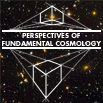Speaker
Cliff Burgess
Description
Two uncertainties define the prevailing attitude toward
the LHC: uncertainty about what new physics it may find
(if any); together with dissatisfaction with the "technical
naturalness" arguments which (when applied to the
hierarchy problem) help suggest what it should be
looking for. The dissatisfaction arises because of a wide-
spread despair about finding a technically natural
solution to the cosmological constant problem, despite
much effort spent seeking it. In this talk I describe a
mechanism within supersymmetric extra-dimensional
theories that allows the low-energy effective
cosmological constant naturally to be of order the
Kaluza-Klein scale. If this is the solution to the
cosmological constant problem, then it requires extra
dimensions that are both very supersymmetric and large
enough to be relevant to the LHC. It in particular implies
there must be modifications to gravity on micron
distances as well as on cosmological scales. For the LHC
it implies in particular three predictions. (1) the (so far -
successful) prediction that no supersymmetric partners
will be discovered, despite the low-energy
supersymmetry; (2) many missing energy channels, with
a gravity scale of 10 TeV; and (3) the existence of string
excitations of standard model particles, likely below 10
TeV.

